Deposition and Characterization of Si-Doped Diamond Films Using Tetraethoxysilane onto a WC-Co Substrate
Abstract
:1. Introduction
2. Materials and Methods
3. Results
3.1. Surface Characterization
3.2. Raman Spectra
3.3. Adhesive Strength
4. Conclusions
Acknowledgments
Author Contributions
Conflicts of Interest
References
- Polini, R. Chemically vapour deposited diamond coatings on cemented tungsten carbides: Substrate pretreatments, adhesion and cutting performance. Thin Solid Films 2006, 515, 4–13. [Google Scholar] [CrossRef] [Green Version]
- Tang, W.; Wang, Q.; Wang, S.; Lu, F. A comparison in performance of diamond coated cemented carbide cutting tools with and without a boride interlayer. Surf. Coat. Technol. 2002, 153, 298–303. [Google Scholar] [CrossRef]
- Polini, R.; Tomellini, M. Analysis of size distribution functions of diamond crystallites formed in the early stages of chemical vapour deposition. Diam. Relat. Mater. 1995, 4, 1311–1316. [Google Scholar] [CrossRef]
- Lin, C.R.; Cheng, T.K.; Chang, R.M. Improvement in adhesion of diamond films on cemented WC substrate with Ti–Si interlayers. Diam. Relat. Mater. 1998, 7, 1628–1632. [Google Scholar] [CrossRef]
- Peters, M.G.; Cummings, R.H. Methods for coating adherent diamond films on cemented tungsten carbide substrates. European Patent 0519587 A1, 1992. [Google Scholar]
- Sun, F.H.; Zhang, Z.M.; Chen, M.; Shen, H.S. Improvement of adhesive strength and surface roughness of diamond films on Co-cemented tungsten carbide tools. Diam. Relat. Mater. 2003, 12, 711–718. [Google Scholar] [CrossRef]
- Cabral, G.; Gäbler, J.; Polini, R.; Lindner, J.; Grácio, J. A study of diamond film deposition on WC-Co inserts for graphite machining: Effectiveness of SiC interlayers prepared by HFCVD. Diam. Relat. Mater. 2008, 17, 1008–1014. [Google Scholar] [CrossRef]
- Tang, Y.; Li, Y.S.; Yang, Q.; Hirose, A. Deposition and characterization of diamond coatings on WC-Co cutting tools with W/Al interlayer. Diam. Relat. Mater. 2010, 19, 496–499. [Google Scholar] [CrossRef]
- Polini, R.; Barletta, M. On the use of CrN/Cr and CrN interlayers in hot filament chemical vapour deposition (HF-CVD) of diamond films onto WC-Co substrates. Diam. Relat. Mater. 2008, 17, 325–335. [Google Scholar] [CrossRef] [Green Version]
- Tang, C.J.; Neves, A.J.; Pereira, S.; Fernandes, A.J.S.; Grácio, J.; Carmo, M.C. Effect of nitrogen and oxygen addition on morphology and texture of diamond films (from polycrystalline to nanocrystalline). Diam. Relat. Mater. 2008, 17, 72–78. [Google Scholar] [CrossRef]
- Sternschulte, H.; Schreck, M.; Stritzker, B.; Bergmaier, A.; Dollinger, G. Growth and properties of CVD diamond films grown under H2S addition. Diam. Relat. Mater. 2003, 12, 318–323. [Google Scholar] [CrossRef]
- Tang, C.J.; Abe, I.; Vieira, L.G.; Soares, M.J.; Grácio, J.; Pinto, J.L. Investigation of nitrogen addition on hydrogen incorporation in CVD diamond films from polycrystalline to nanocrystalline. Diam. Relat. Mater. 2010, 19, 404–408. [Google Scholar] [CrossRef]
- Tang, C.J.; Neves, A.J.; Fernandes, A.J.S. Study the effect of O2 addition on hydrogen incorporation in CVD diamond. Diam. Relat. Mater. 2004, 13, 203–208. [Google Scholar] [CrossRef]
- Wu, W.J.; Hon, M.H. The effect of residual stress on adhesion of silicon-containing diamond-like carbon coatings. Thin Solid Films 1999, 345, 200–207. [Google Scholar] [CrossRef]
- He, X.M.; Walter, K.C.; Nastasi, M.; Lee, S.T.; Fung, M.K. Investigation of Si-doped diamond-like carbon films synthesized by plasma immersion ion processing. J. Vac. Sci. Technol. A 2000, 18, 2143–2148. [Google Scholar] [CrossRef]
- Ray, S.C.; Okpalugo, T.I.T.; Papakonstantinou, P.; Bao, C.W.; Tsai, H.M.; Chiou, J.W.; Jan, J.C.; Pong, W.F.; Mclaughlin, J.A.; Wang, W.J. Electronic structure and hardening mechanism of Si-doped/undoped diamond-like carbon films. Thin Solid Films 2005, 482, 242–247. [Google Scholar] [CrossRef]
- Zhao, Q.; Liu, Y.; Wang, C.; Wang, S. Bacterial adhesion on silicon-doped diamond-like carbon films. Diam. Relat. Mater. 2007, 16, 1682–1687. [Google Scholar] [CrossRef]
- Musale, D.V.; Sainkar, S.R.; Kshirsagar, S.T. Raman, photoluminescence and morphological studies of Si- and N-doped diamond films grown on Si(100) substrate by hot-filament chemical vapor deposition technique. Diam. Relat. Mater. 2002, 11, 75–86. [Google Scholar] [CrossRef]
- Orlanducci, S.; Sessa, V.; Tamburri, E.; Terranova, M.L.; Rossi, M.; Botti, S. Si-doped and nanocomposite Si-diamond films: Cathodoluminescence and photoluminescence characterizations of Si centers. Surf. Coat. Technol. 2007, 210, 9389–9394. [Google Scholar] [CrossRef]
- Shen, B.; Sun, F. Deposition and friction properties of ultra-smooth composite diamond films on Co-cemented tungsten carbide substrates. Diam. Relat. Mater. 2009, 18, 238–243. [Google Scholar] [CrossRef]
- Boizot, B.; Petite, G.; Ghaleb, D.; Reynard, B.; Calas, G. Raman study of β-irradiated glasses. J. Non-Cryst. Solids 1999, 243, 268–272. [Google Scholar] [CrossRef]
- Kuzik, L.A.; Yakovlev, V.A.; Mattei, G. Raman scattering enhancement in porous silicon microcavity. Appl. Phys. Lett. 1999, 75, 1830–1832. [Google Scholar] [CrossRef]
- Kirkpatrick, R.J.; Yarger, J.L.; Mcmillan, P.F.; Ping, Y.; Cong, X. Raman Spectroscopy of C-S-H, Tobermorite, and Jennite. Adv. Cem. Based Mater. 1997, 5, 93–99. [Google Scholar] [CrossRef]
- Feng, Z.C.; Mascarenhas, A.J.; Choyke, W.J.; Powell, J.A. Raman scattering studies of chemical-vapor-deposited cubic SiC films of (100)Si. J. Appl. Phys. 1988, 64, 3176–3186. [Google Scholar] [CrossRef]
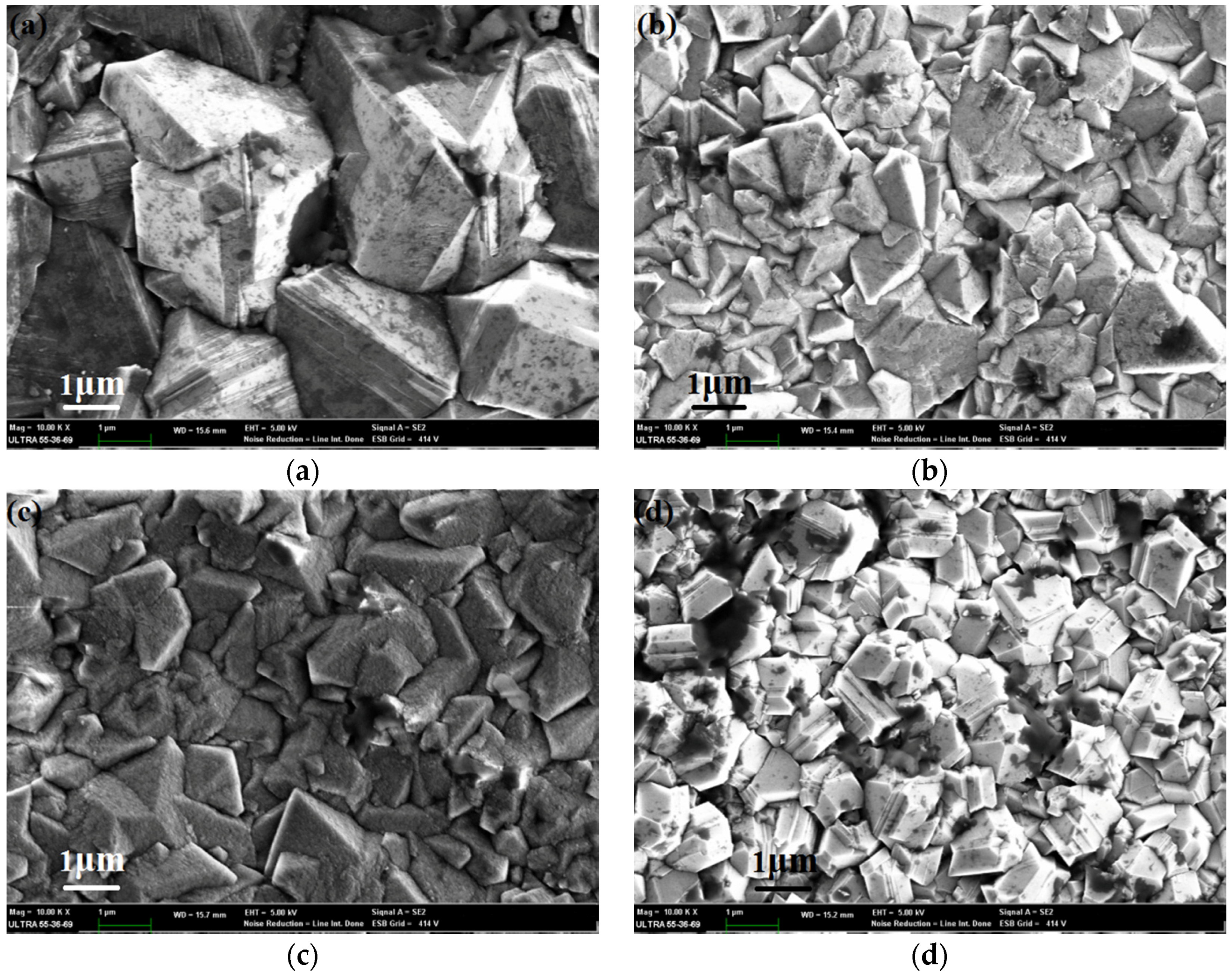
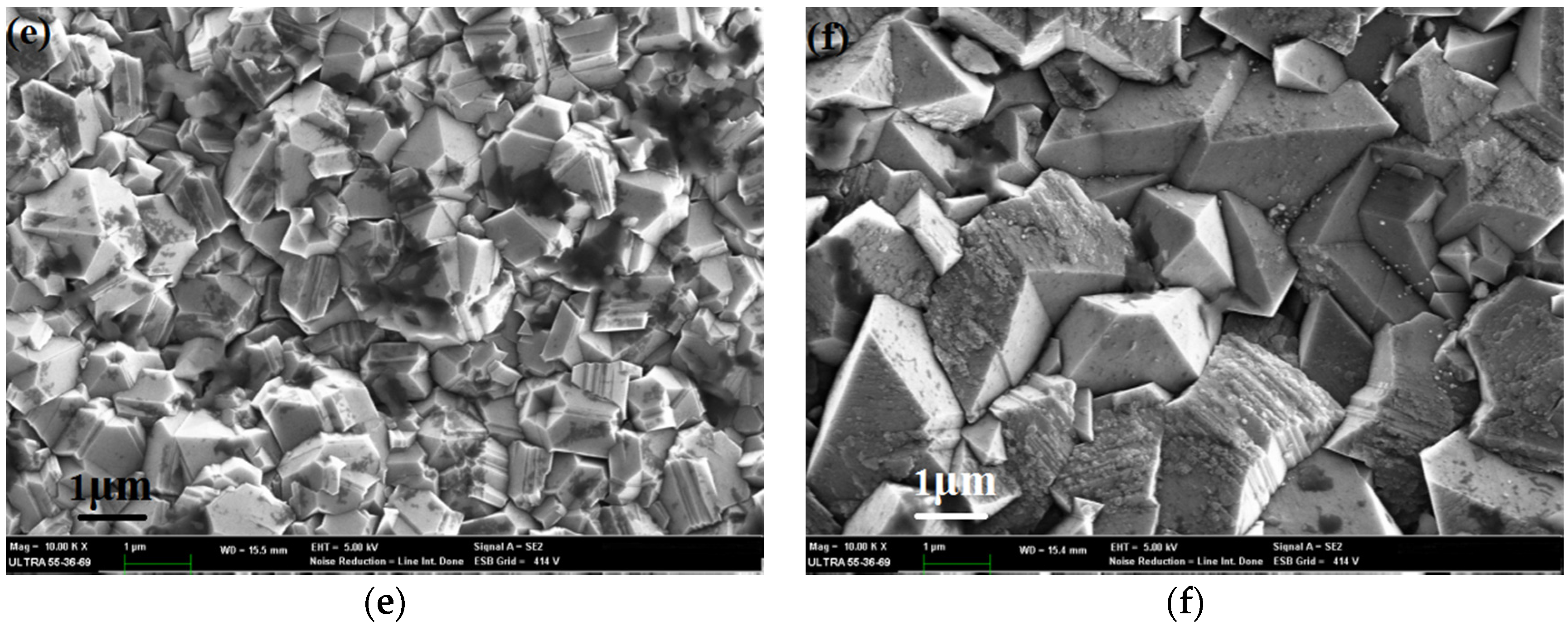
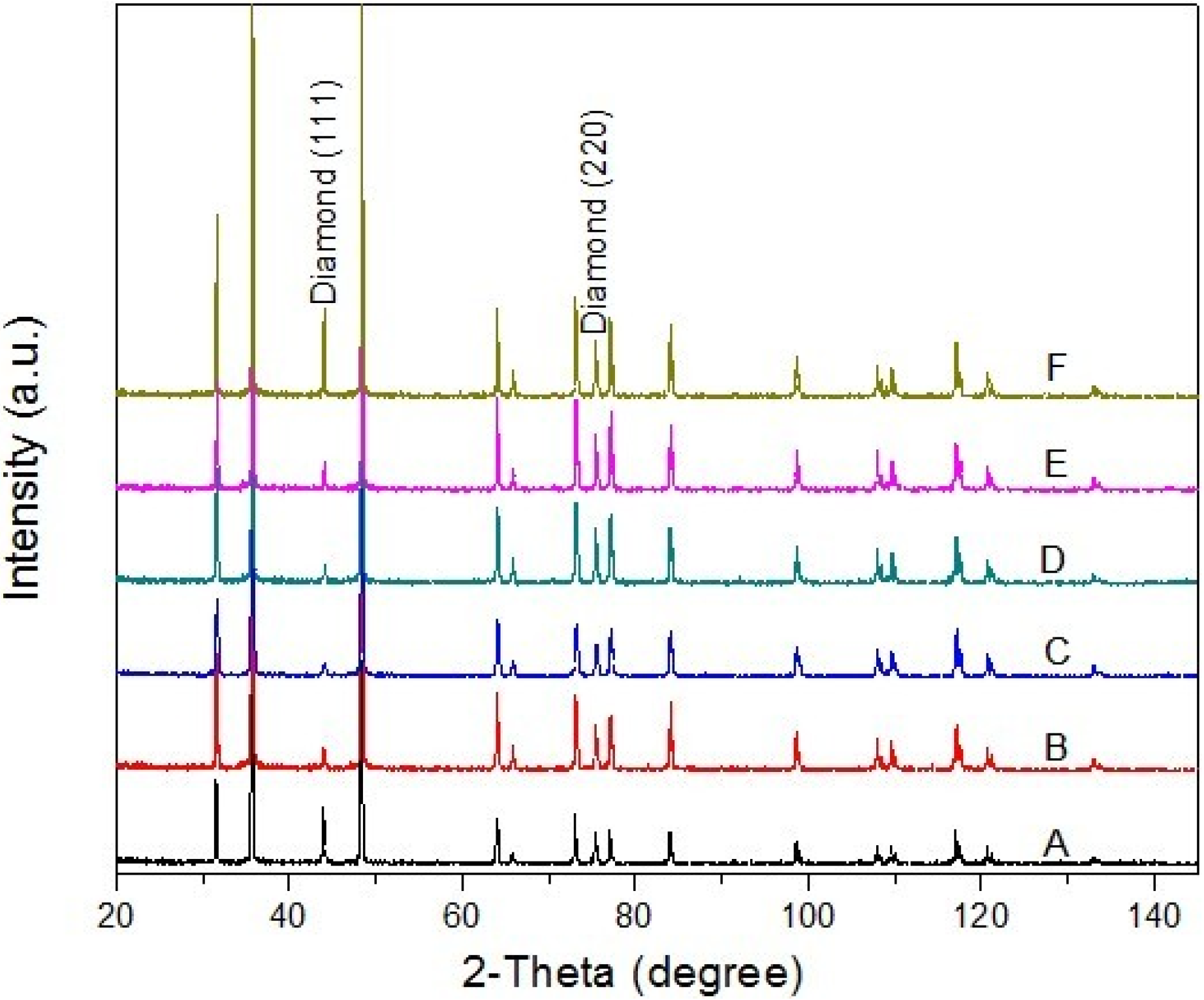
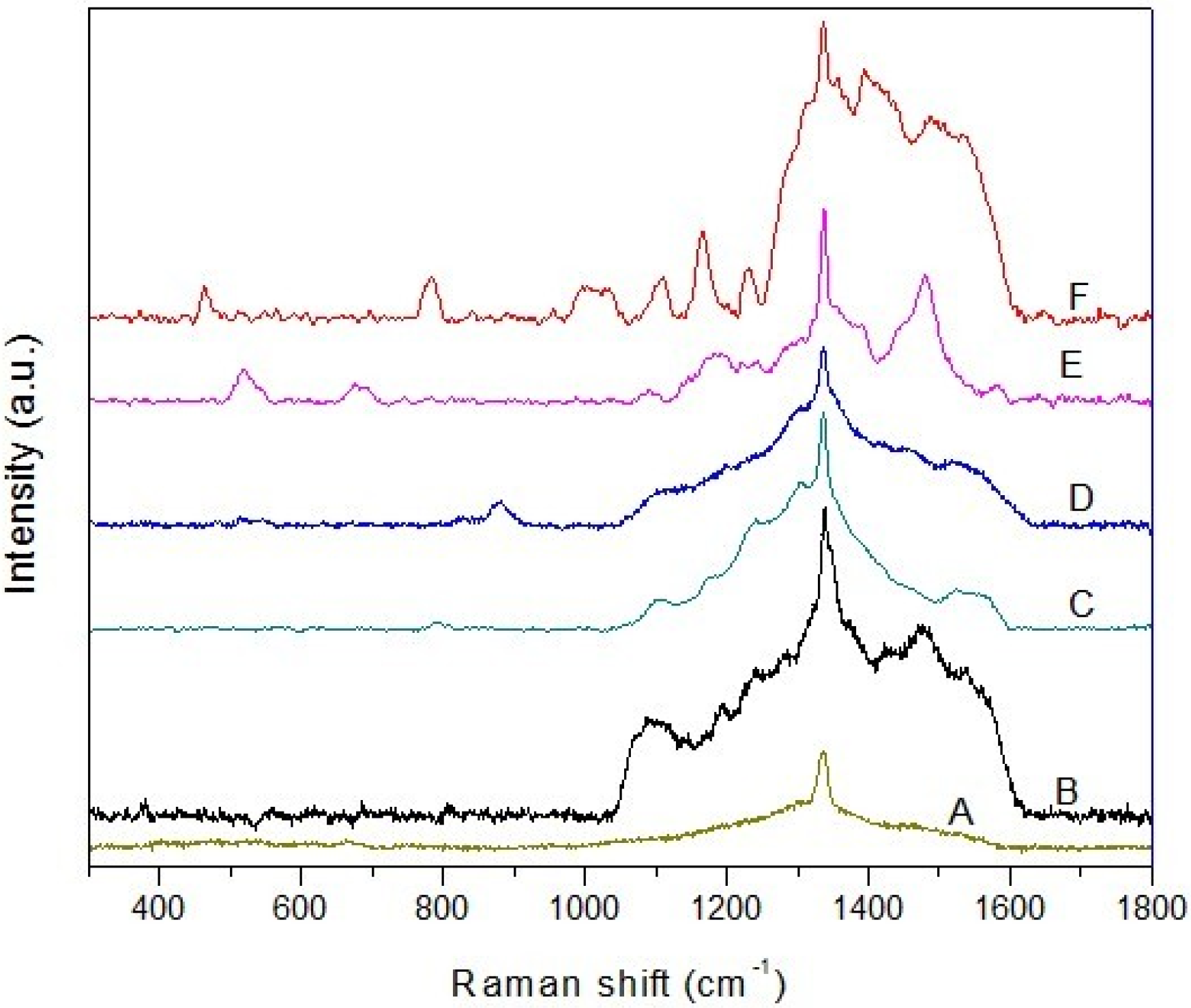
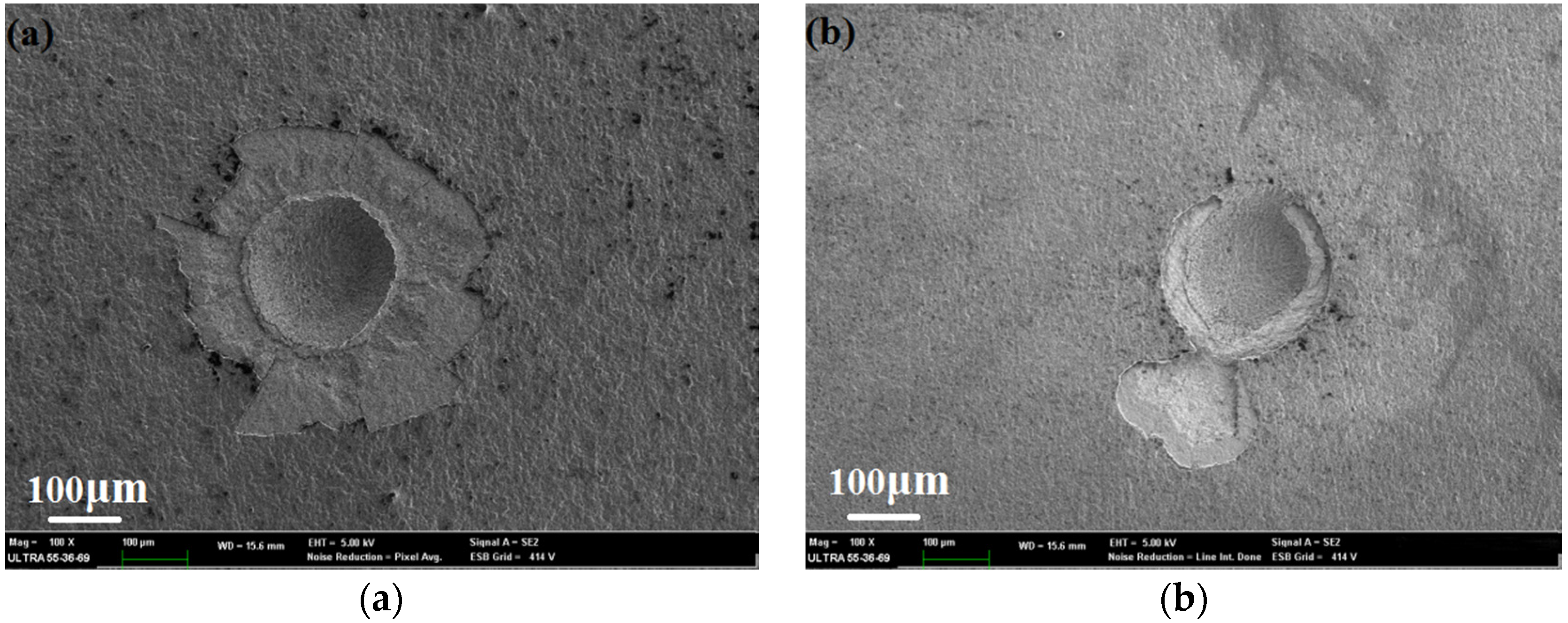
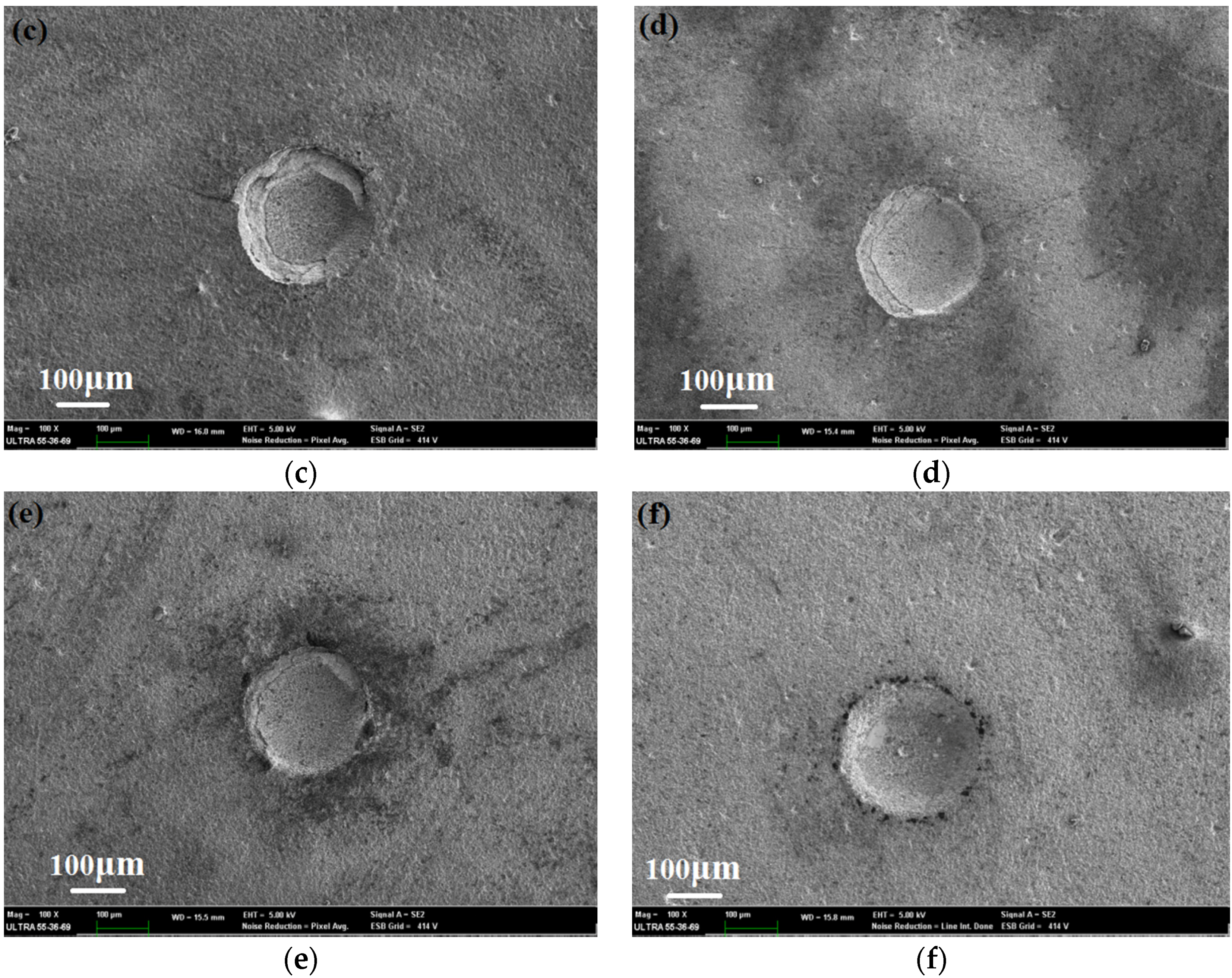
| Sample Title | Si/(Si + C) (atom %) | Substrate Temperature (°C) | Deposition Time (h) |
|---|---|---|---|
| A | 0 | 800 ± 50 | 6 |
| B | 0.11 | 800 ± 50 | 6 |
| C | 0.52 | 800 ± 50 | 6 |
| D | 0.98 | 800 ± 50 | 6 |
| E | 1.41 | 800 ± 50 | 6 |
| F | 1.81 | 800 ± 50 | 6 |
© 2016 by the authors; licensee MDPI, Basel, Switzerland. This article is an open access article distributed under the terms and conditions of the Creative Commons Attribution (CC-BY) license (http://creativecommons.org/licenses/by/4.0/).
Share and Cite
Zhang, J.; Ji, X.; Bao, J.; Zheng, X. Deposition and Characterization of Si-Doped Diamond Films Using Tetraethoxysilane onto a WC-Co Substrate. Coatings 2016, 6, 39. https://doi.org/10.3390/coatings6030039
Zhang J, Ji X, Bao J, Zheng X. Deposition and Characterization of Si-Doped Diamond Films Using Tetraethoxysilane onto a WC-Co Substrate. Coatings. 2016; 6(3):39. https://doi.org/10.3390/coatings6030039
Chicago/Turabian StyleZhang, Jianguo, Xia Ji, Jinsong Bao, and Xiaohu Zheng. 2016. "Deposition and Characterization of Si-Doped Diamond Films Using Tetraethoxysilane onto a WC-Co Substrate" Coatings 6, no. 3: 39. https://doi.org/10.3390/coatings6030039






